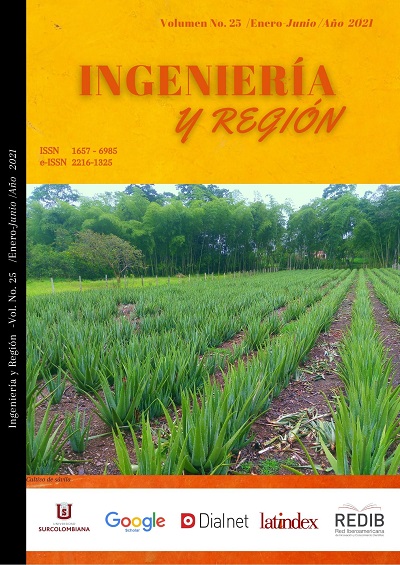Sexual dimorphism of Zophobas morio (Fabricius, 1776) (Coleoptera, Tenebrionidae) in the pupa and adult stages
##plugins.themes.bootstrap3.article.main##
Zophobas morio, is a Coleoptera, Tenebrionidae, opaque black, robust and fast displacement. It is their larvae and not the adults, who are very useful in feeding animals such as fish, spiders, birds, reptiles, scorpions, amphibians and mammals, because of their high protein content. This is one of the reasons that justifies its importance and encourages its breeding for commercial and experimentation purposes. In several trials with this insect, it is necessary to form pairs of male and female, which can be done in both the pupa and adult stages. This work aims to show by means of images, the sexual dimorphism of Z. morio both in the pupa stage, and in the adult, with living and dead specimens. The dead adults were clarified in KOH at 10% to facilitate their observation. The images are descriptive photographs and by the didactic approach of research, two conceptual maps were developed to summarize by steps the work done and incentivize repeatability. Photographs of pupae and adults were taken with a stereoscopic Wild M7A microscope and a Panasonic Lumix digital camera, DMC-ZS20. It was obtained as a result of the observations, a noticeable difference in the shape of the genital papillae of the female pupa, with respect to those of the male. Likewise, by comparing the edge of the male adult's frontoclipeal region with that of the female, sexual dimorphism was clearly evident. The methodology used was quite successful in sexing the insect in two phases of its biological cycle. Thus, in addition to the existing taxonomic keys, this work is a photographic and didactic support useful in the identification of the species.
Downloads
##plugins.themes.bootstrap3.article.details##
Bombelli, P., Howe, J.C., Bertocchini, F. 2017. Polyethylene bio-degradation by caterpillars of the wax moth Galleria mellonella. Current Biology, 27(8): R292-R293. DOI: https://doi.org/10.1016/j.cub.2017.02.060
Brandon, A.M., Gao, S.H., Tian, R., Ning, D., Yang S.S., Zhou, J., Wu. & Criddle C.S. 2018. Biodegradation of Polyethylene and Plastic Mixtures in Mealworms (Larvae of Tenebrio molitor) and effects on the Gut Microbiome - Environ. Sci. Technol. (52): 11, 6526–6533. DOI: 10.1021/acs.est.8b02301
Couto, F. D., Marques, R., Ramos, G. M., Rodrigues de Souza, J., y Santos, T, M. 2010. Estudo comportamental das fases de desenvolvimento do Zophobas morio (Coleoptera, Tenebrionidae) da criação científica do Centro de Ecología e Conservação animal. Revista da FZVA. Uruguaiana (17)2: 146-158.
Cruz, P., y Peniche C. 2018. La domesticación y crianza de insectos comestibles: una línea de investigación poco explorada y con gran potencial para el desarrollo sostenible y la seguridad alimentaria en México. Folia Entomol. Mex. (n. s.), 4(2): 66−79.
FAO. 2013. La contribución de los insectos a la seguridad alimentaria, los medios de vida y el medio ambiente. Consultado: el 22 de abril de 2020. http://www.fao.org/3/i3264s/i3264s00.pdf. https://doi.org/10.4272/84-9745-154-6.ch14
Ferrer, J., 2011. Revisión del género Zophobas Dejean, 1834 (Coleoptera, Tenebrionidae, Tenebrionini). Boletín de la Sociedad Entomológica Aragonesa (S.E.A.), 48: 287‒319.
Grilli, J., Laxague, M., Barboza, L. 2015. Dibujo, fotografía y Biología. Construir ciencia con y a partir de la imagen. Revista Eureka sobre Enseñanza y Divulgación de las Ciencias 12(1): 91-108. Cádiz, España. DOI: http://www.redalyc.org/articulo.oa?id=92032970005. https://doi.org/10.25267/rev_eureka_ensen_divulg_cienc.2015.v12.i1.07
Halstead, D.G.H. 1986. Keys for identification of Beetles associated with stored products. I-Introduction and key to families. J. stored Prod. Res., 22(4), 163-20. DOI.org/10.1016/0022-474X (86) 90011-13.
Ipiff. 2019. Contribution Paper on the application of insect frass as fertilizing product in agriculture. Consultado: el 15 de mayo de 2020. http://ipiff.org/wp-content/uploads.
Jiang, Yuan, Hang, Yina, Ma Ling, Wang Hui, Hu Liyu & Han Jie. 2012. Identification of Alive Female and Male Adult of Zophobas morio (Coleoptera: Tenebrionidae). Scientia Silvae Sinicae, 48(6): 175-177.
Know-how - Ynsect. (s.f.). Consultado 20 Abril 2020. Http://www.ynsect.com/en/ynsect-2/expertise/
Mondragón, I. y Camero, R.E. 2007. Manual para el manejo e identificación de coleópteros y lepidópteros de importancia económica en granos y productos almacenados. UPEL. 87pp
Mondragón, I. y Contreras, Y. 2015. Uso de los insectos Tenebrio molitor, Tribolium castaneum y Palembus dermestoides (Coleoptera, Tenebrionidae) como recurso didáctico en la enseñanza de las ciencias naturales. Revista de Investigación. 39(86): 255-270. https://doi.org/10.30827/digibug.37114
Morote, K. y Vásquez, J. 2003. Estudio de escarabajo amazónico Zophobas opacus (Coleoptera: Tenebrionidae) para incluirlo como alimento vivo en sistemas de crianza de fauna silvestre en cautiverio, peces ornamentales y de consumo. MEMORIAS: Manejo de Fauna silvestre en Amazonia y Latinoamérica. 695-702. https://doi.org/10.48204/j.scientia.v31n1a1
Schulte, R., 1996. El manejo de Zophobas morio (Coleoptera: Tenebrionidae) en climas tropicales húmedos. Folia amazónica Vol. 8 (2), 47-75. https://doi.org/10.24841/fa.v8i2.321


















